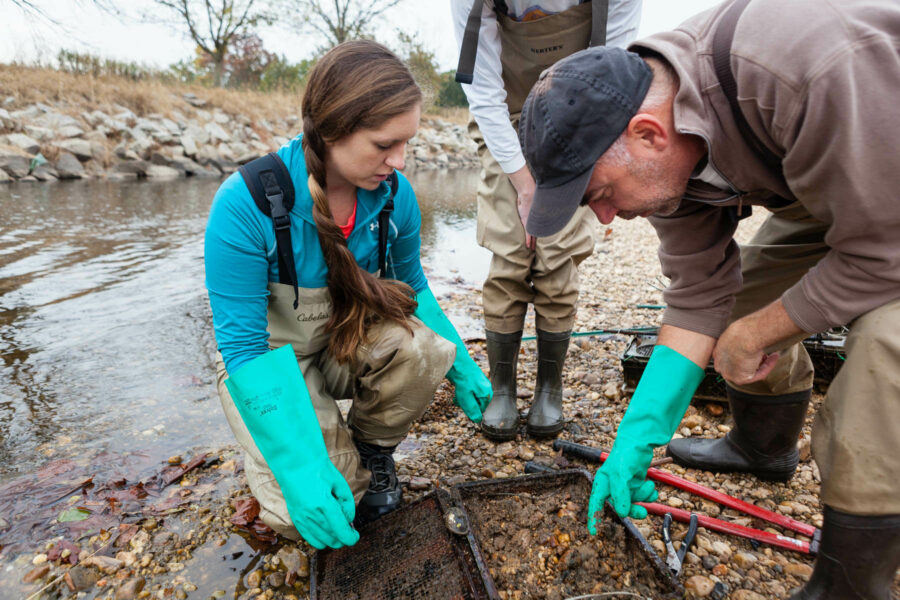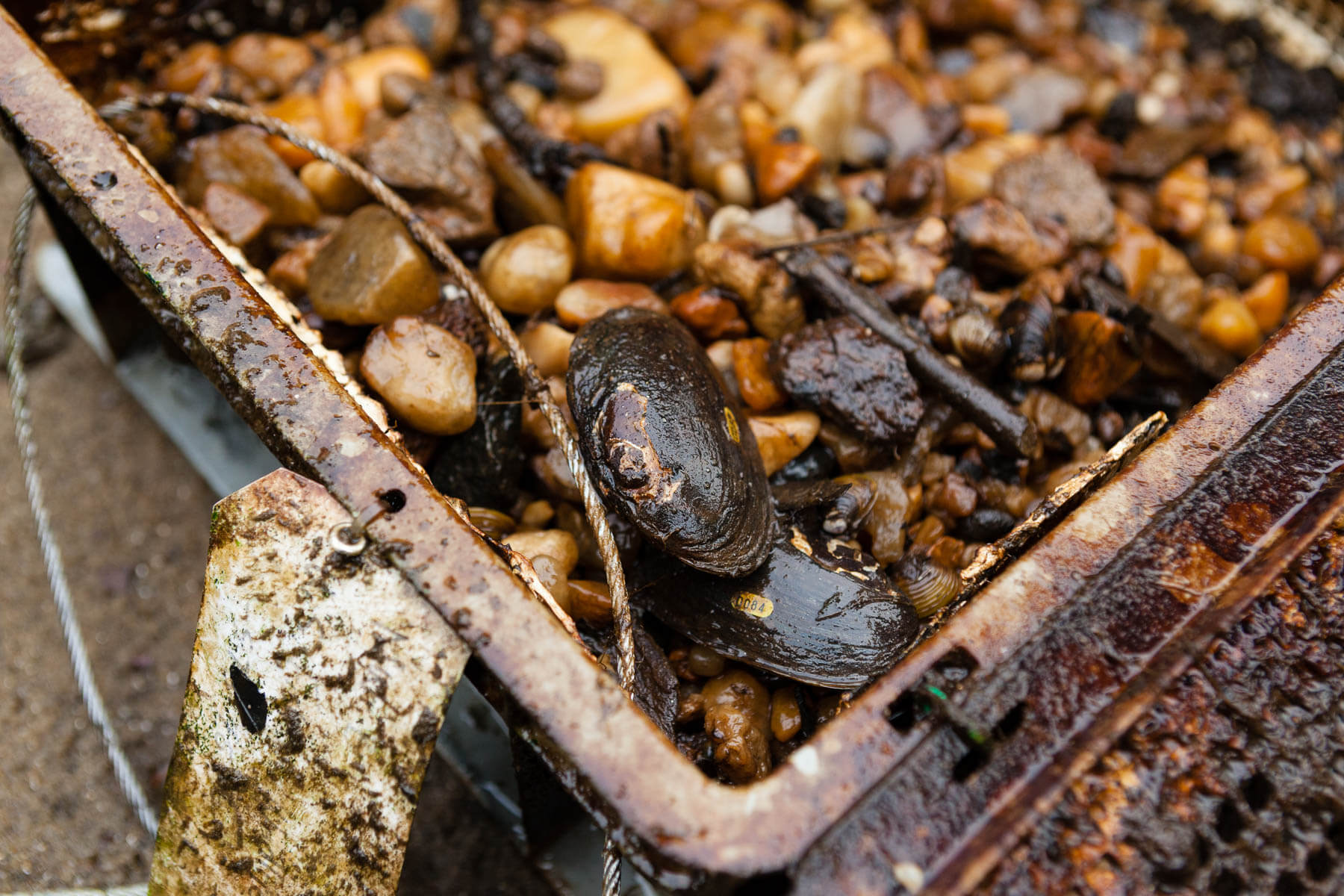Researchers give mussels new power

Take a moment to thank the humble freshwater mussel. It spends its life in the muddy bottom of rivers and streams, yet finds time to filter water, improving the health of the ecosystem like its oyster cousins do in more brackish areas. Mussels also can feed otters, muskrats, herons and other critters—a final act of generosity.
Given the right conditions, species of mussel like the eastern elliptio can live up to 100 years. But their filter-feeding ways can make them susceptible to poor water quality. And, another piece of their life history can also prevent them from living in all suitable waters.
Baby mussels, known as glochidia, need to attach to a fish host to complete their life cycle. Dams and pollution that block fish also block the mussels that could otherwise find a home upstream.
According to biologist Rachel Harrison, it’s not quite a parasitic relationship between fish and mussel, though sometimes it’s described that way.
“The fish isn't really being harmed,” Harrison said. “It's just more being used as an Uber for four to six weeks.”

Previously, Harrison looked at the impact of chemical contaminants in fish species like smallmouth bass and brown bullhead catfish. Her interest in watershed health led her to join the lab of Dr. Lance Yonkos at the University of Maryland. There, she led a study of how well the eastern elliptio could survive in tributaries of the Anacostia River, which winds through parts of Maryland and D.C. The results could guide possible efforts to reintroduce the eastern elliptio into parts of the Anacostia watershed where they no longer live.
The study also gave the mussel yet another way to serve—as a pollution indicator. Because mussels absorb contaminants, the study helped Harrison understand ongoing sources of toxic contaminants known as persistent organic pollutants (POPs).
The Anacostia River has a history of pollution. Chemicals released by industry decades ago still linger in the sediment at various points on the river. The District of Columbia is planning a massive dredging and capping project to address these legacy chemicals. But, ongoing sources of POPs—a group that includes polycyclic aromatic hydrocarbons (PAHs), polychlorinated biphenyls (PCBs), and organochlorine pesticides like DDT—are not well understood.
Despite decades of habitat destruction and pollution, there are still eight species of native mussels living in the Anacostia. The largest hotspot for mussels is at Buzzard Point in D.C., where the Anacostia mixes with cleaner flows from the Potomac River.
Still, Harrison said the Anacostia is similar in many ways to healthier watersheds on the East Coast. “Those systems have a diverse mussel population and they're also less polluted, so you would think that mussels could thrive in the Anacostia as well if we can clean it up.”
Already, the Anacostia Watershed Society (AWS) has seen promising results in its effort to boost populations of three mussel species in the Anacostia. The eastern elliptio is just one of several more species that could expand their range as restoration efforts continue to improve the health of the Anacostia.
For Harrison’s study, mussels from a healthy swamp in southern Maryland were placed in cages at six locations in the Anacostia watershed. The specimens went from a habitat free of chemical contaminants to one surrounded by heavy urban development. Harrison and others would check the cages weekly.
“We would also take any debris that would fly down the river and take that off of the cages,” Harrison said. “And sometimes that [debris] involved pairs of pants and plastic bags—it was a lot.”
Amid the urban settings, Harrison found that the mussels were healthy and thriving at the end of her five-month study.
“We found [chemical contaminants] in the tissue of the mussels, meaning they were doing their job at filtering. And also, the contaminants are still affecting the benthic [bottom-dwelling] community and the watershed as a whole,” Harrison said.
Multiple agencies helped with Harrison’s project. On busier days in the field, when mussels were being collected or deployed, staff from the U.S. Fish and Wildlife Service, Maryland Department of Natural Resources and District Department of Energy and Environment all helped out.
“I really like that they’re all just coming together and saying, ‘Okay, we really need to clean up this watershed, this is serious,’” Harrison said.
Over a longer term, pollution could still threaten both mussels and their fish hosts. But if water quality continues to improve in the Anacostia, so will the mussels’ odds of survival. Already, Harrison loves that AWS has also seen excellent survival in their mussel project.
“Overall, between my project and theirs now, I think it’s a really good sign to be optimistic.”

Comments
I'd say the early stages of the mussels' life is an example of Mutualism as the fish benefit from increased water quality!!
Wow I learned a lot that I didn’t know. Thank you for helping save the Bay.
This is very interesting and a hopeful consideration for the future!
Thank you!
Your comment has been received. Before it can be published, the comment will be reviewed by our team to ensure it adheres with our rules of engagement.
Back to recent stories